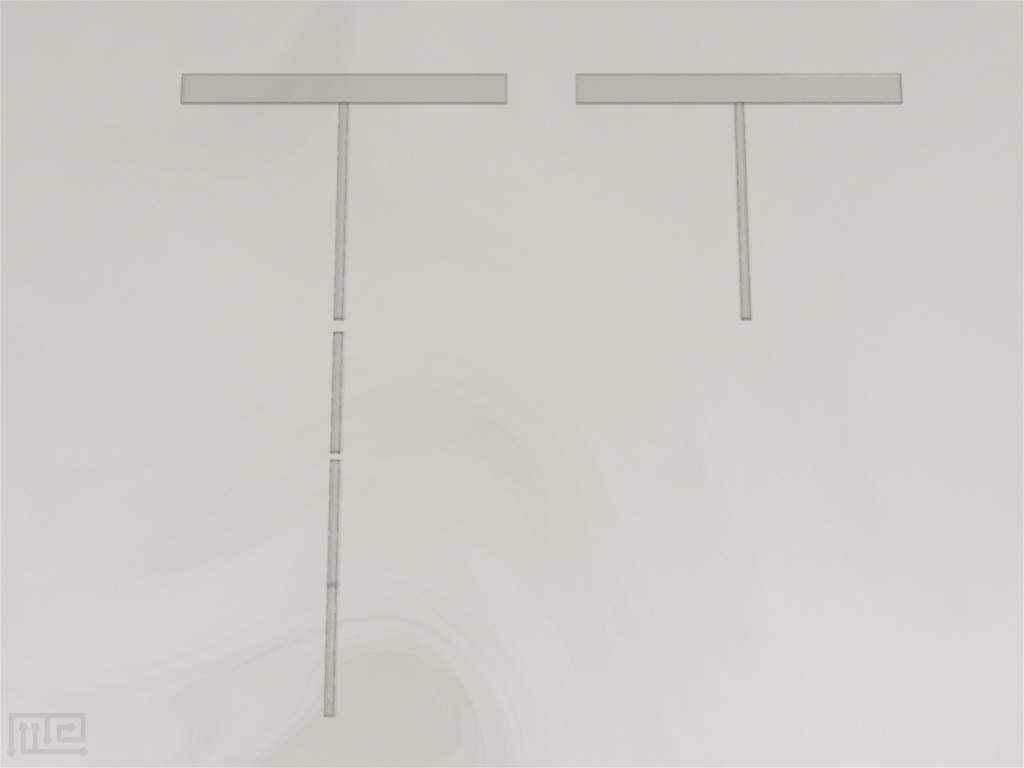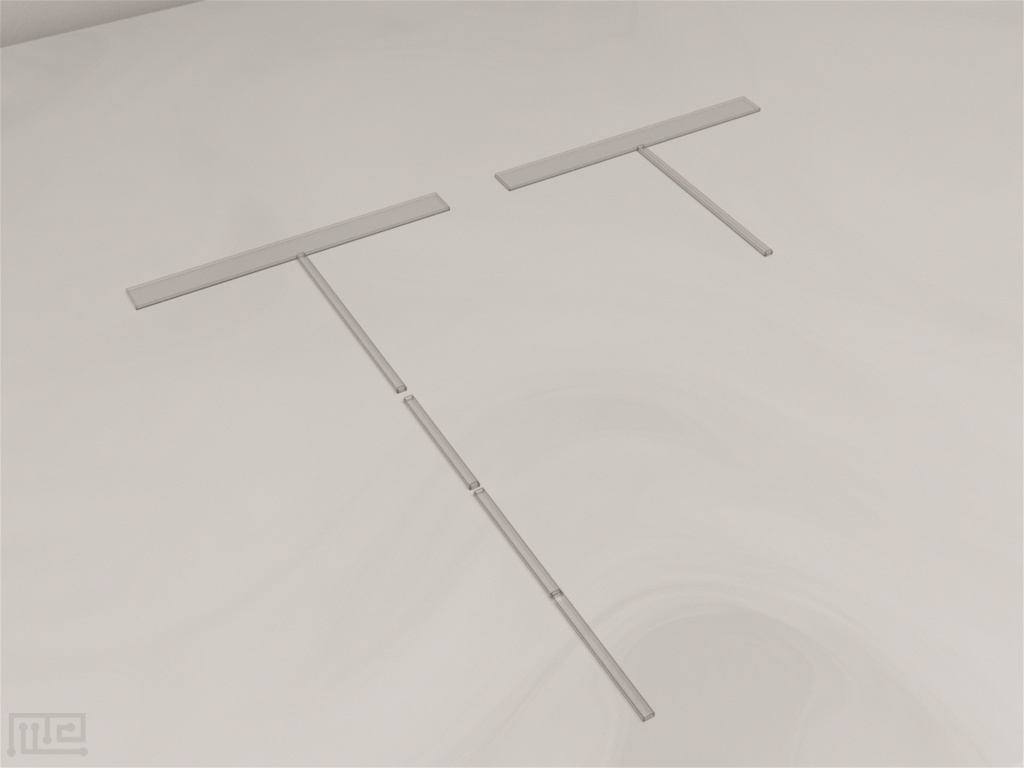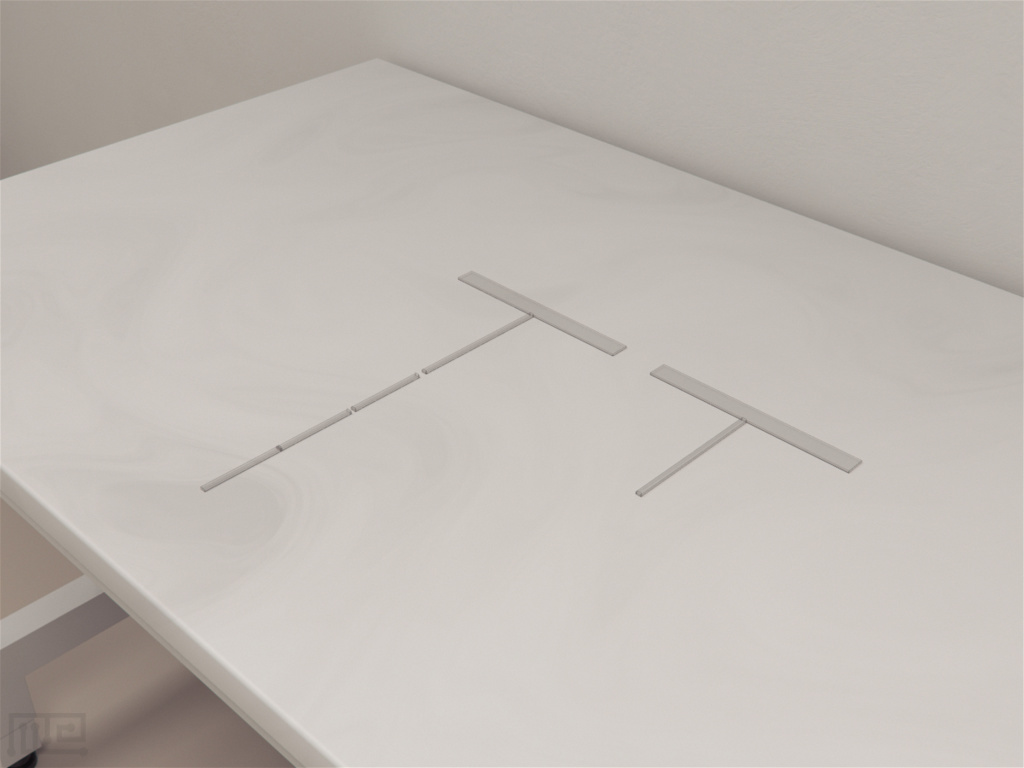The Ant T-maze is used to evaluate the social, spatial, and cognitive behaviors of ants. Conventionally the T-maze is popularly used to study spatial and cognitive behavior in rodents. The Ant T-Maze allows experimentation using colonies, thus allowing observation of communication behaviors as they would take place in the natural habitat.
Customization available upon request
Price & Dimensions
Ant T Maze
$ 1190
One maze- Stem Length: 15 cm
- Stem Width: 5cm
- Head Length: 22cm
- Head Width: 2cm
- Communication arm: 6cm length x 5cm width
- Buffer: 8cm length, 5cm width
Sizing

Documentation
Introduction
The Ant T-maze is used to evaluate the social, spatial, and cognitive behaviors of ants. Conventionally the T-maze is popularly used to study spatial and cognitive behavior in rodents. The Ant T-Maze allows experimentation using colonies, thus allowing observation of communication behaviors as they would take place in the natural habitat.
Communication plays an important role in behaviors that require cooperation between two or more individuals. Communication signals affect behaviors that may include recognition of nestmates, mating, and foraging. Given its crucial role, investigations into interactions within colonies of insects have been of great interest. Unlike humans that rely on spoken language, insect communication takes forms of advanced motor displays, such as the waggle dance in bees, or odor cues in the form of pheromone trails.
The Ant T-Maze allows investigations into the communicative behaviors of ants. In particular, the maze allows exploration of the idea that directional information transfer between ants uses antennation. The apparatus uses two capital ‘T’ shaped mazes placed on a slider. The starting point of the maze begins at the stem, while the two arms at the T head act as goal/ reward arms. The two T-Maze set-up allows visually similar yet distinct information environments that can be used to evaluate the communication behaviors of ants of the same colony.
Other mazes also used in assessing insect behavior include the Bee Redial Arm, Bee Reward Expectation Apparatus and Drosophila Y Maze.
Apparatus & Equipment
The Ant T-maze’s stem is about 150 mm long and 5 mm wide, whereas the head is 220 mm long and 20 mm wide. The T maze is connected to the ant nest via a communication arm which is about 80 mm long and 50 mm wide. In between the communication arm and the T-maze is an additional path, called the buffer, which is 80 mm long. Both the communication arm and the buffer are removable. The T-maze is connected to another T-maze of the same dimensions via a slider.
Training Protocol
Clean the device before, after and in-between usage. Appropriately illuminate the maze by using overhead headlights to prevent any shadow formation. Observation and recording of the movements of the subjects can be done using a tracking system such as the Noldus EthoVision XT. Use of disposable sheets inside the apparatus is optional, but their use is advised to minimize the influence of pheromone trails in the experiment.
Habituation and Pre-training
Ants can be housed in clear plastic box and should be fed three times a week. Prior to conducting the trials, the ants are to be starved for about 3 to 5 days.
Tactile communication task
Divide the ants into two groups: informed ants and non-informed ants. The ants which remain in the nest and do not make any contact with the informed ants can be used as a control group. Designate one of the T-Mazes (T1) for use with only the informed ants. Select the first two ants that reach the goal arm as informed ants. Remove the rest of the ants from the apparatus. Mark the informed ants using acrylic paint. Allow them to return to the goal arm for a maximum of 4 times.
Release the non-informed ants unto the communication arm so they can come in contact with the informed ants. Separate the naïve informed ants from the non-informed ants. Allow them to move beyond the communication arm unto the designated T-maze (T2). Return the informed ants back to their nest.
Alternatively, allow the informed ants to make only one move towards the goal arm. The communication arm can be removed to ensure natural contact with non-informed ants. Use a small stick or a toothpick to form a pathway to the designated maze.
Studying tactical communication of direction in foraging ants
Popp, Bonnett, Evison, Robinson, and Czaczkes (2017) studied tactical communication among two separate colonies of Lasius ants using the same apparatus with slightly different methodologies. Experiment 1 used L. niger, whereas experiment 2 used L. neglectus colonies. Two informed ants were selected to pass information by antenna touching to the non-informed ants. The naïve informed ants were then allowed unto another T-maze which was specifically designated for them. If the ants were able to reach the goal arm after contact, the experiment was considered a success. The results at first showed positive results, but once stringent rules were applied to both experiment 1 and 2, no evidence for physical communication of direction of food could be found.
Data Analysis
The following data can be analyzed using the T maze,
- Time to reach the goal arm after making contact with informed ant.
- The number of times naïve informed ants turned around after making contact with informed ants.
- Correct/Incorrect decision made by naïve informed ants
- Time spent in the reward arm by informed ants and naïve informed ants.
- Time spent in the non-reward arm by naïve informed ants.
- Ant Order: The order in which the ants were tested.
Strengths & Limitations
Strengths
The T-maze is a simple device which can be used to study cognitive functions and behavioral assays in different species without causing any stress on them. The device is easy to clean and be covered with disposal sheets. Two T-maze are connected to each other via a slider to prevent contamination from the release of bodily fluids which could act as olfactory cues. The T-maze has a removable communication arm and a buffer arm which can be used as per the experimenter’s discretion.
Limitations
Factors such as the species, their foraging techniques and the type of environment can affect the task performance. Contamination such as the release of pheromones could give faulty result in the experiment. The interaction period allocated may not be sufficient to communicate. The choice made by the subject may be heavily dependent on its motivation which can be affected by variability in reward during training and the actual experiment.
Summary & Key Points
- The Ant T-maze is used to study the spatial and cognitive behavior among insects especially in terms of their tactile communication behavior.
- The T-maze is connected to another T-maze via a slider.
- The flexibility of using a removable communication arm and a buffer arm makes it easy for informed ants and naïve ants to come in contact with each other.
References
Popp, S., Buckham-Bonnett, P., Evison, S.E.F., Robinson. E. J. H., Czaczkes. T. J., (2017). No evidence for tactile communication of direction in foraging Lasius ants. Insectes Sociaux. 65(1). PP 37-46 https://doi.org/10.1007/s00040-017-0583-6


